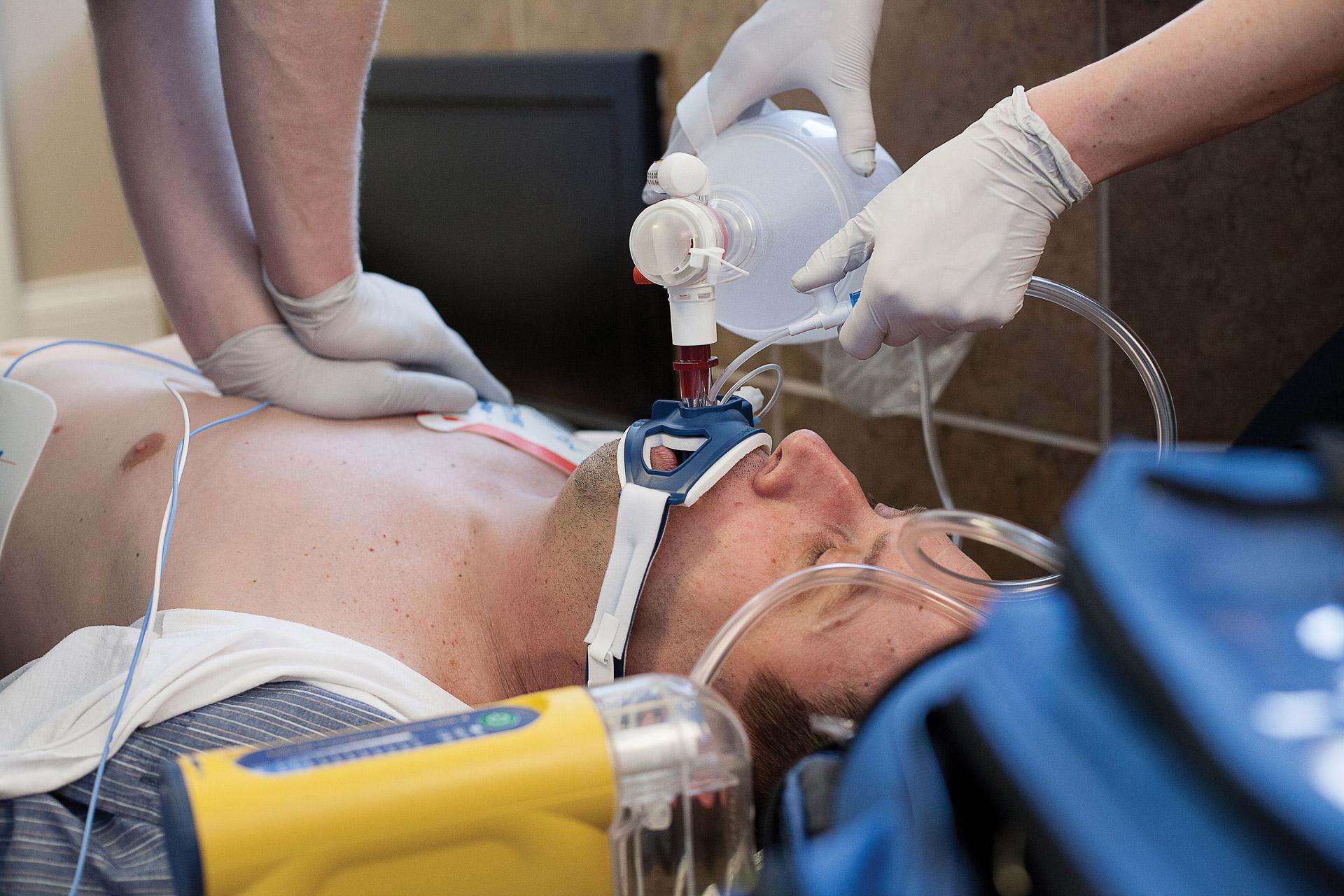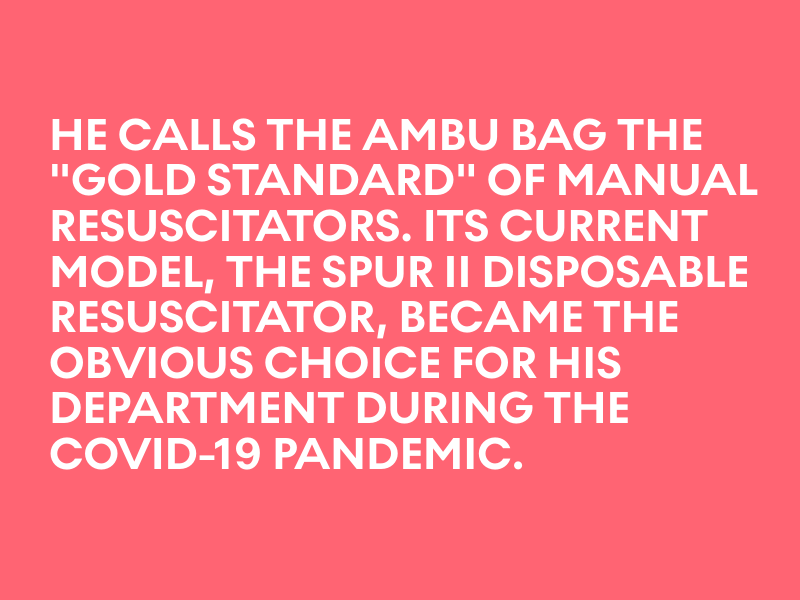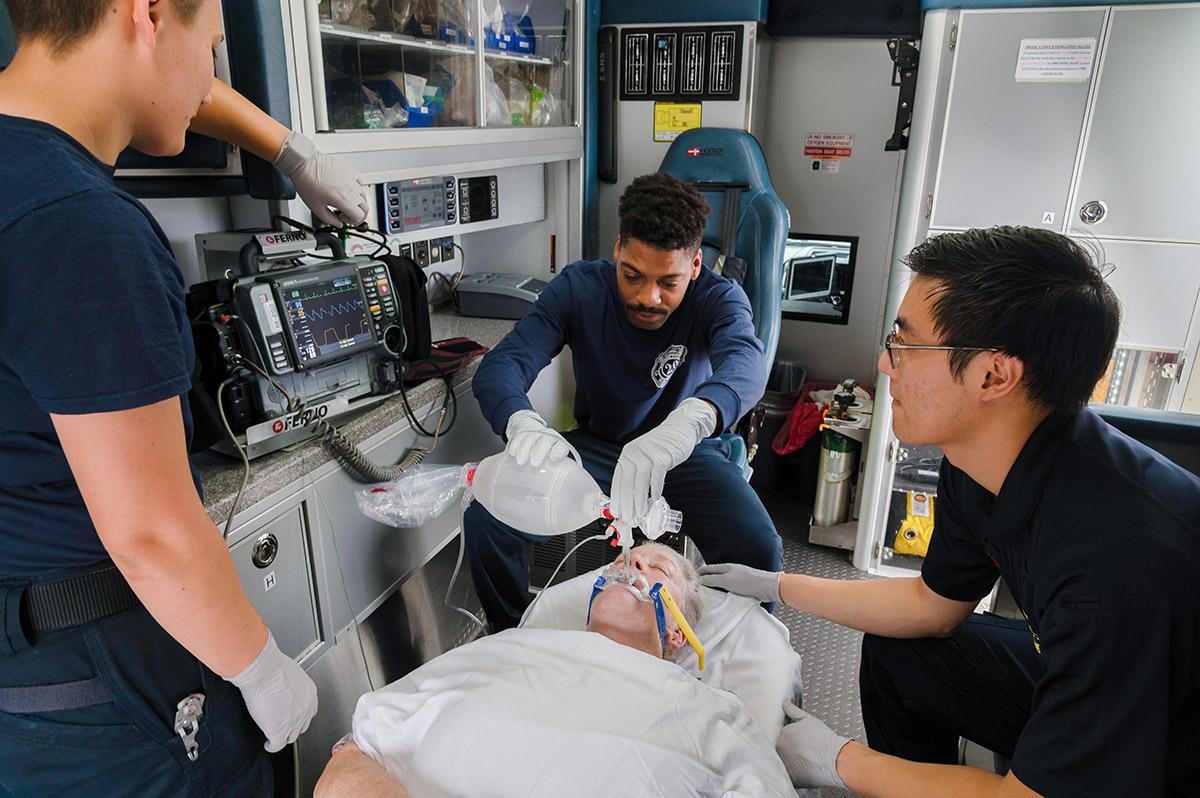A Day in the Life of the Ambu Bag: The ‘Gold Standard’ of Manual Resuscitation

No one success story comes to mind for Lieutenant Jeff Berry when he’s asked to share one.
That, he explained, says it all about the Ambu® Bag™ resuscitator.
“I think that might be one of the badges of honor for that device,” Berry said. “It is a reliable tool that's in our toolbox. When it comes out, it has a job to do, and it performs that job pretty much the same way every time you pull it out. And so, it is unremarkable in a very remarkable way.”
The veteran lieutenant and EMS specialist at East Pierce Fire & Rescue in Washington first learned how to use the product in 1992. Berry estimated he’s used an Ambu Bag hundreds of times since then, thousands when counting training sessions.
Safety in A Pandemic
He calls the Ambu Bag the “gold standard” of manual resuscitators. Its current model, the SPUR II disposable resuscitator, became the obvious choice for his department during the COVID-19 pandemic.
The resuscitators they had been using did not have a filter, so Berry decided any additional cost would be warranted by the safety the SPUR II offered.
Ambu’s product was easier to use, too. Berry said its volume options are better and the size of the bag is preferable. It was easier to manage with one hand, removing a previous tactic of squishing it against one’s leg. He preferred its “softer” feel.
“Ventilating a stomach and ventilating lungs feel very different. I think it probably takes a little while of bagging a few different patients to understand that that feels different,” Berry explained. “Understanding what bagging through an open airway feels like, versus bagging through an airway that might not be open that effectively, that is transferred directly into the squeeze of the bag. You're measuring that with your right or left hand — whichever it is you're squeezing the bag with. And the softer the bag is, the more that feel is directly transferred into your hand.”
Meeting the Standard
East Pierce Fire & Rescue loaded up on SPUR II resuscitators near the beginning of the pandemic. Berry called it a topline product backed up by top-notch customer service, making it a “pretty hard thing to walk away from.” “When you're looking at developing a tool to take over one of the most important jobs of the human body has to do for itself, it needs to be good,” he said. “I think that's why we spend so much time training on it. That's why we spend so much time evaluating these products and making sure that they're going to meet that standard.”
“When you're looking at developing a tool to take over one of the most important jobs of the human body has to do for itself, it needs to be good,” he said. “I think that's why we spend so much time training on it. That's why we spend so much time evaluating these products and making sure that they're going to meet that standard.”
About a decade ago, a change occurred in terms of who in a unit was tasked with manually resuscitating a patient. Back then, it would be handed to the least senior person in the room “because it was easy, you can’t screw it up,” Berry said.
That thinking has changed, and in recent years, the task can be found with one of the more experienced providers.
“That says a lot about the importance of that piece of equipment, and really the skill level of the provider to make sure that it turns into a good, positive patient outcome,” Berry said. “In the last 10 years, it is really when we started climbing that ladder towards being airway and breathing specialists.”


